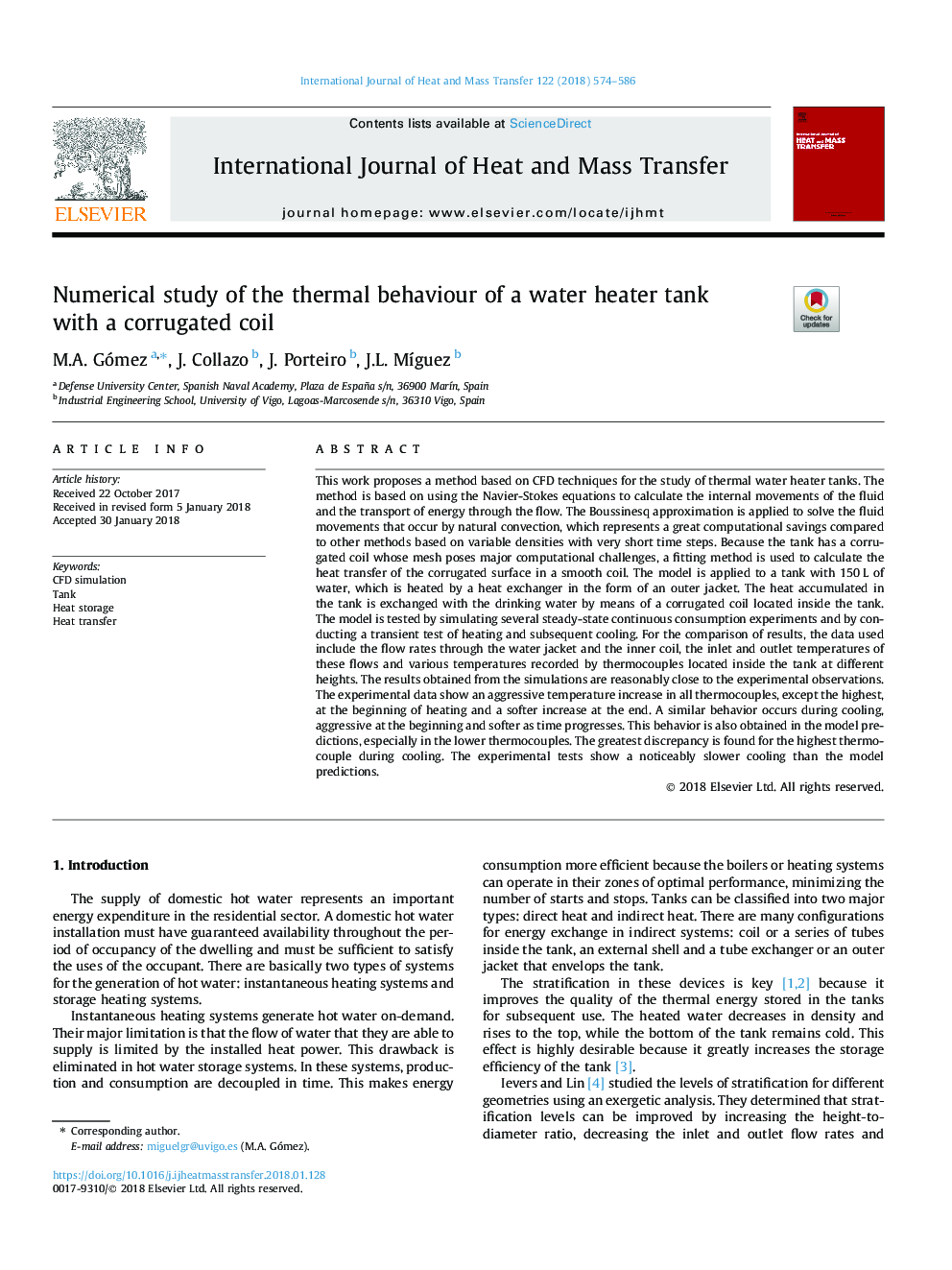| کد مقاله | کد نشریه | سال انتشار | مقاله انگلیسی | نسخه تمام متن |
|---|---|---|---|---|
| 7054394 | 1458018 | 2018 | 13 صفحه PDF | دانلود رایگان |
عنوان انگلیسی مقاله ISI
Numerical study of the thermal behaviour of a water heater tank with a corrugated coil
ترجمه فارسی عنوان
بررسی عددی رفتار حرارتی مخزن آب گرم کن با یک سیم پیچ موجدار
دانلود مقاله + سفارش ترجمه
دانلود مقاله ISI انگلیسی
رایگان برای ایرانیان
کلمات کلیدی
موضوعات مرتبط
مهندسی و علوم پایه
مهندسی شیمی
جریان سیال و فرایندهای انتقال
چکیده انگلیسی
This work proposes a method based on CFD techniques for the study of thermal water heater tanks. The method is based on using the Navier-Stokes equations to calculate the internal movements of the fluid and the transport of energy through the flow. The Boussinesq approximation is applied to solve the fluid movements that occur by natural convection, which represents a great computational savings compared to other methods based on variable densities with very short time steps. Because the tank has a corrugated coil whose mesh poses major computational challenges, a fitting method is used to calculate the heat transfer of the corrugated surface in a smooth coil. The model is applied to a tank with 150â¯L of water, which is heated by a heat exchanger in the form of an outer jacket. The heat accumulated in the tank is exchanged with the drinking water by means of a corrugated coil located inside the tank. The model is tested by simulating several steady-state continuous consumption experiments and by conducting a transient test of heating and subsequent cooling. For the comparison of results, the data used include the flow rates through the water jacket and the inner coil, the inlet and outlet temperatures of these flows and various temperatures recorded by thermocouples located inside the tank at different heights. The results obtained from the simulations are reasonably close to the experimental observations. The experimental data show an aggressive temperature increase in all thermocouples, except the highest, at the beginning of heating and a softer increase at the end. A similar behavior occurs during cooling, aggressive at the beginning and softer as time progresses. This behavior is also obtained in the model predictions, especially in the lower thermocouples. The greatest discrepancy is found for the highest thermocouple during cooling. The experimental tests show a noticeably slower cooling than the model predictions.
ناشر
Database: Elsevier - ScienceDirect (ساینس دایرکت)
Journal: International Journal of Heat and Mass Transfer - Volume 122, July 2018, Pages 574-586
Journal: International Journal of Heat and Mass Transfer - Volume 122, July 2018, Pages 574-586
نویسندگان
M.A. Gómez, J. Collazo, J. Porteiro, J.L. MÃguez,
